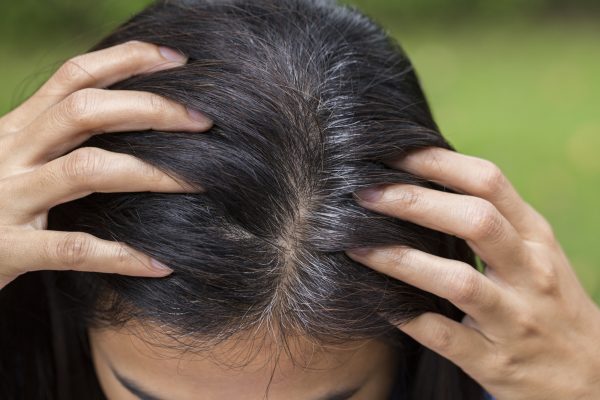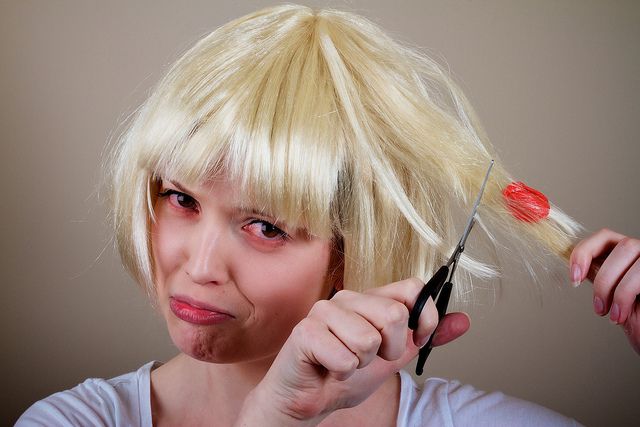Anyone who has endured the anguish of an ingrown hair will go to any length to avoid it occurring again—especially if that sucker is planted squarely on the face.
That’s enough to make a man quit shaving his face entirely, especially if he’s prone to ingrown hairs. Rather than abandoning the razor, there is an excellent method for preventing ingrown hairs in the first place (along with a regimen to treat and heal them quickly, whenever they do arise).
While everyone is susceptible to ingrown hairs, which are generally the consequence of poor or quick shaving, males are more prone, according to board-certified dermatologist James Collyer, MD, of Modern Dermatology in Seattle.
“Thicker, denser hair is more prone to ingrown hairs, and men have thicker ‘terminal’ hairs than women,” Collyer observes. Terminal hairs are those that begin to develop throughout adolescence and can be found everywhere on the body, including the legs, face, chest, back, feet, and so on. (“Vellus” hairs, which are the short, fine hairs that we all have from birth, are more predominant in women.)
So, what are the most effective methods for preventing and treating ingrown hairs? Continue reading to obtain Collyer’s recommendations, as well as that of UMass Memorial Medical Center in Worcester, MA board-certified dermatologist Karan Lal, MD (and a member of the Society for Pediatric Dermatology).
How to Avoid Ingrown Hairs
Collyer says that whatever you pluck, wax or shave presents a potential for ingrown hair since the new or newly shorn hair must make its way out of the skin untrapped.
Make use of a Disinfecting Cleanser.
“If you are prone to ingrown hairs, always wash your face with antibacterial wash—with sulphur or benzoyl peroxide—prior to shaving,” Lal advises. “This will neutralize any bacteria that can proliferate inside the skin along with those trapped hairs, as well as help prevent overall irritation and shaving bumps.”
Slowly shave
Both doctors agree that the safest shave regimen is one that carefully goes through every step of the shave and makes no haste. The regimen should include a skin-conditioning and hair-softening pre-shave oil, a sensitive shave gel, and a soothing/toning post-shave recovery balm, not to mention steady strokes throughout the shave, with frequent warm rinses to clear away debris from the razor.
Never shave dry
“Always shave with a wet, moist face—usually after a shower,” Collyer advises, adding that warm water helps relax the hairs and open the pores, resulting in less resistance or hard hair-cutting from the shave and less razor drag.
(Razor drag is not only irritating, but it can also cause dead cells and clippings to become trapped in the pores.) Collyer also recommends using shaving cream or gel rather than shaving dry or using skin-drying shave soaps, because the more moisture you have, the better lubricated and protected the skin is against ingrown.
You may also like: Best Shaving Creams For Men In 2023
Use a New Blade
It’s also important to shave with fresh blades to avoid the aforementioned razor drag from a dull blade, as well as any chance of bacterial infection. Ideally, you’ll switch after 6-8 shaves, or every 3-4 weeks, whichever comes first, but if you shave infrequently enough, just toss the blade after each shave, or look to the next tip for a potentially cheaper alternative.
Alternatively, use safety razors.
When you convert to a safety razor shave, you never go back since they offer a closer shave overall. However, the closer your shave, the more likely you are to acquire ingrown hairs, according to Collyer, because “close shave” translates to “hairs cut deeper below the surface of the skin.”
The assumption that “more is better” is absurd, especially when more razors mean more dragging, more trapping debris, and more possibility to push that hair below the surface of the skin or shave away too many cells, all of which is a formula for trapped hairs.
In other words (and in short), a safety razor reaches the sweet spot between a tight shave and an uncomfortably close shave, and its blades are less expensive and much easier to purchase in bulk (and thus part ways with, to promote better shave hygiene).
Shave Against the Grain and Keep Your Skin Loose
Lal recommends shaving with the grain of the hair—that is, in the direction it grows—so that when you slice the hair at the skin’s level, it is less likely to wedge itself underneath the surface. You can also avoid an even closer result by not pulling the skin taut, as you would with a regular shave. That fraction of a millimetre could mean the difference between a trapped hair and a freed one.
You may also like: Smooth & Bump-Free Facial Hair Shaving Guide For Men
Consider using an electric razor.
If you’ve tried everything and nothing has worked, it’s time to give up, says Collyer. That’s because razors all cut the hair slightly below the surface of the skin, whereas electric razors trim it right above. While you may have to freshen up every day (to avoid stubble from showing), it can still beat any irritation and ingrown.
Ingrown Hair Treatment
If you have an existing ingrown hair and need to extract it safely, follow these procedures in the sequence Collyer recommends.
Sanitize the Area
This is one of the rare instances a doctor would advise you to apply to rub alcohol to your face (or elsewhere on your body), since you need to disinfect the region surrounding the ingrown hair to prevent bacteria from entering the skin once the hair is extracted.
Use a Warm Compress
Gently press a clean, warm cloth against the area to help relax the hair and bring it up to the skin’s surface; you may do this for 10-15 minutes, but you may need to re-wet or reheat the cloth to keep it warm; never apply hot water to avoid burning the skin.
Tweeze (but do not squeeze!)
If you can see the hair beneath the skin, Collyer hereby grants you permission to try coaxing it out. This does not mean plucking it; rather, you’re trying to free it by pulling it up out of the skin, so that everything can heal around it and it can continue growing normally. You should also use clean, freshly disinfected tweezers.
Avoid shaving the affected area.
Lal adds that you should avoid shaving the area until it heals completely, instead using a beard trimmer to cut things down in the region while the wound heals.
Continue to use a disinfectant cleaner.
Remember the rubbing alcohol recommendation from the first step? Lal recommends keeping it on hand and using it after an ingrown hair extraction to keep the skin clean and encourage faster, safer healing of the ingrown region.
When Should You See a Doctor for an Ingrown Hair?
“If the region gets red, hot, and sensitive,” Collyer advises, “you should consult a board-certified dermatologist immediately once,” especially if the redness spreads further or a ‘pus’ lump emerges, which might indicate an infection.


